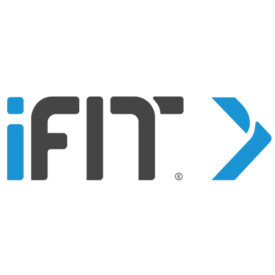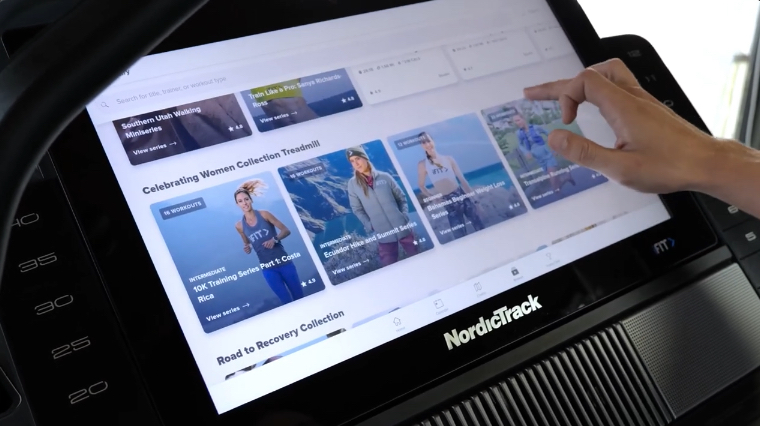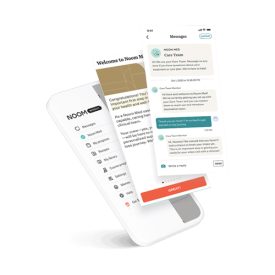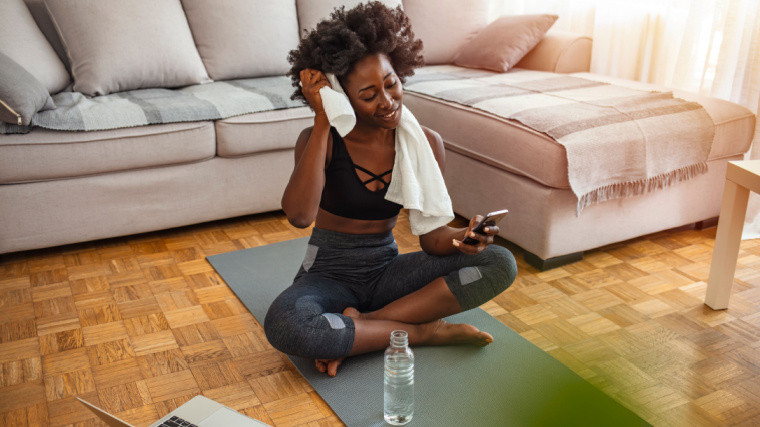In today’s fitness realm, it seems there’s an app for every training discipline. These online workout programs can deliver the coaching, tips, motivation, and (of course) daily workouts you need directly to your trusted smartphone or tablet. The best fitness apps combine that library of information with engaging, easy to use interfaces that work with your fitness goals.
With so many apps to choose from, however, it can be difficult to determine which platform is the best fit for your home screen. Do you want an app that’s specific to your training interests, or one that caters to a variety of disciplines? What about access to a personal trainer? Can you structure your fitness program on your own, or need a helping hand to keep you moving forward? To help you navigate through the app store, we’ve tested 19 digital platforms, conducted plenty of research, and read through countless customer reviews to land on our favorite fitness apps available today.
The 8 Best Fitness Apps of 2023
- Best Fitness App Overall: Future
- Best Fitness App for Personal Training: Caliber
- Best Fitness App for Live Classes: iFit
- Best Fitness App for Weight Loss: Noom
- Best Fitness App for Strength Training: Juggernaut AI
- Best Budget Fitness App: Living.Fit
- Best Free Fitness App: Nike Training Club
- Best Fitness App for Yoga: Alo Moves
How We Tested
The BarBend team is made up of competitive athletes, certified personal trainers, and lifelong fitness enthusiasts. For this round-up, we downloaded and subscribed to 19 different fitness platforms targeting strength and conditioning, nutrition, cardio, yoga, and other fitness categories.
To land on our top eight recommendations, we first looked to see if these apps were available for both Apple and Android (yes, blue vs. green text has a place in fitness, too). Next, we tested each platform in our personal workout regimens to get a feel for how engaging and helpful these services were.
We looked at how vast the workout libraries were for training-focused apps, as well as how easy it was to track our daily calorie counts for nutrition-based services. Other services, like diet recommendations and personal coaching, were also examined.
We also looked at how costly each service was from a monthly perspective — would these digital services be a smart investment over other options like an in-person dietician or personal trainer? In addition to subscription costs, we also noted the equipment requirements of each fitness app. Could we get by with just the subscription, or would we need to make other investments for additional home gym equipment or an outright gym membership? Here’s what we found.
Best Fitness App Overall: Future
Future Online Personal Training

Specs
- Price Per Month: $199
- Equipment Required: Bodyweight, Home Gym, Commercial Gym
- Training Type: Strength and Conditioning
- Available On: iOS, Android
Pros
- You’re paired with a personal trainer that customizes your workout regimen to your needs.
- Each exercise has a video demonstration, making it easier for you to understand the movement.
- The in-app communication with your trainer is great for motivation and accountability.
Cons
- The $199 monthly cost may be too rich for some athletes.
- For form and technique suggestions, you’ll need to record your workouts for your personal trainer.
- You need to manually log each workout, which may be too hands-on for some.
If you’re looking for an immersive training experience that’s rich with motivation, advice, and engagement, we highly recommend subscribing to Future. Yes, the monthly membership is expensive at $199, but with that you’re essentially getting a full-fledged personal trainer in your pocket (or on your watch or TV).
We love how tailored Future is to your specific needs. Once you complete a quick quiz about your fitness level, goals, injury history, and your preferred coaching style, you’re paired with your instructor. You video chat with them for an introduction, and from there, your plan is customized to your abilities and available equipment.
You don’t need a squat rack or bevy of kettlebells and free weights at your disposal, your coach can prescribe bodyweight exercises if you’re limited on training gear.
Our tester also appreciated how informative the workout plans are thanks to the accompanying videos for each prescribed exercise. This can be a great tool for novice athletes that may be nervous about performing certain movements with the correct form.
If you are curious about your technique in a given workout, you can record yourself and send it to your coach for analysis and feedback. This may be a chore for some, but it’s also an example of the great lines of communication at play with Future. You can chat back and forth with your instructor through the app, and even have the opportunity to video call if you need a more involved discussion. Plus, your coach keeps you accountable and motivated with daily check-ins, reminders to log your workouts, and tips on where you can improve.
As far as user experience is concerned, we experienced no bugs or lagging when navigating the app. Our tester also appreciated how Future can be used across their smartwatch for added convenience during training. You can also stream your daily workouts to a nearby TV or monitor for larger viewing needs. We found this especially helpful when tackling new, challenging exercises we hadn’t experienced before.
Read our full Future App Review.
Best Fitness App for Personal Training: Caliber
Caliber

Caliber
With two coaching subscriptions to choose from (one group oriented and one individualized), Caliber can be an excellent tool for guiding your fitness journey. The prescribed workouts can be tailored to your available equipment, and you’re in constant communication with your personal trainer through the app’s chat feature and video call capabilities.
Specs
- Price Per Month: Up to $200
- Equipment Required: Bodyweight, Home Gym, Commercial Gym
- Training Type: Strength Training
- Available On: iOS, Android
Pros
- Caliber offers both group and individualized personal training plans for $19 and $200 monthly, respectively.
- There is a free, ad-free version with a full exercise library of over 500 loggable movements.
- One-on-one coaching plans also offer suggestions for nutrition, sleep, hydration, and mobility.
Cons
- Our tester noted that some instructional videos had difficulty loading.
- The individualized plan for $200 per month may be too expensive for some.
- The app does not sync with Garmin-, Fitbit-, or Strava-powered devices.
Having a personal trainer at your disposal can be great for staying diligent in your training, nutrition, and wellness journeys. That said, hiring an individual for these needs can have hourly rates ranging from $25 to over $100. (1) Thankfully, Caliber offers three tiers of subscriptions that cater to a variety of budgets.
There’s a group-oriented Pro version for $19 per month, and a Premium version costing $200 monthly for individualized coaching. A free version also exists, but doesn’t offer any coaching support but rather a library of trackable workouts and instructional videos.
Caliber’s main objective lies in strength training, but they also have some programming tailored for bodyweight training. Your regimen is designed around progressive overload in select exercises rather than a wide array of movements each week, which we like as progressive overload is one of the best methods for supporting muscle growth and strength increases. (2)
At the Pro level, there are four programs to choose from — one for beginners, one for intermediate to advanced exercisers, one for weight loss, and one for bodyweight-only workouts. Our tester’s experience saw them placed in their desired group with an active chat that allowed users to ask questions and receive feedback as they moved through their programs. Our tester said trainer responses were quickly received, and the community environment was very welcoming as everyone was looking to better themselves.
For athletes wanting one-on-one instruction, we feel this is where Caliber really flexes its muscles. You’re paired with a trainer who creates a structured fitness regimen specific to your training goals and nutrition habits. You have daily access to your coach through the app’s chat feature, as well as weekly check-ins for progress monitoring and one monthly video chat to talk through performance strategies moving forward. Plus, the workouts are built around your available equipment, which we enjoy mightily.
Finally, we can’t ignore Caliber’s free version that’s always available, rather than as a trial. This version of the app offers over 600 loggable exercises that you can follow along with and even build your own regimens from.
While our tester did note that the accompanying video instructions for each movement can lag at times, we really appreciate this option as it provides support for athletes who may not want additional coaching. The free version is ad-free, too, which is always a plus in the app realm.
Best Fitness App for Live Classes: iFit
$25 Off
iFit Class Subscription

iFit Class Subscription
The iFit app features a library of over 16,000 live and on-demand classes that range from mental health and recovery to rowing, running, HIIT and strength classes. You can get the full studio experience virtually through iFit, and is a great boost to any home gym set-up — with or without equipment.
Specs
- Price Per Month: $39
- Equipment Required: iFit-enabled Cardio Machine, Bodyweight, Dumbbells, Exercise Mat
- Training Type: Cardio, Strength Training, Yoga, Pilates, Mindfulness, Barre
- Available On: iOS, Android
Pros
- There are over 17,000 live and on-demand workouts to choose from.
- This app is compatible with a variety of cardio machines, which is great for on-equipment streaming.
- You can routinely participate in challenges to keep workouts fresh, challenging, and entertaining.
Cons
- Those looking for a more personalized experience may not enjoy the studio-style workouts.
- Our tester said the home screen can feel busy with all the information and workouts upfront.
- You’ll need an iFit-compatible cardio machine to follow along with certain workouts, which could be an added cost.
Fitness apps can also be great for creating a studio-like training experience right in your own home. In our opinion, iFit’s library of over 17,000 live and on-demand classes is prime for these needs. The service is compatible with a variety of cardio machines from NordicTrack, ProForm, Freemotion, and Matrix, so there’s ample opportunity to get your daily fix. Plus, the platform boasts off-machine workouts catering to such disciplines as HIIT, pilates, yoga, and barre.
We appreciate iFit’s assortment of workouts, which creates a good sense of variety whether following along atop a treadmill or breaking up your sessions with a quick stretching circuit. Our tester, who tested iFit with a NordicTrack S22i exercise bike, said they had no problem choosing a new session day in and day out across the library which included trainer-led workouts, HIIT circuits, and ride-along modules powered by Google Maps that take you through some of the world’s most beautiful environments.
Additionally, iFit offers an AutoAdjust feature on their compatible devices, which automatically toggles your incline and speed settings in tune with your instructor’s commands. We really appreciate this technology that allows us to focus on our performance throughout our entire sessions without having to pause or break to keep our machines aligned to the workout. This feature is only available on iFit-enabled devices, but it’s still a perk to consider.

Looking at the user experience, we had no instances of lagging or bug-riddled interfaces, navigation was intuitive, and the filters when searching for your desired workout are easy to toggle. While our tester said that the home screen can feel busy at times — there is a lot of information upfront — they did get used to the layout rather quickly.
We do recommend paying close attention to the equipment requirements before hopping into a session, though. This information is sort of buried in the details, and you could be left scrambling for a dumbbell or resistance band mid-workout if you don’t do your homework prior.
An iFit subscription is available for $39 monthly, but we appreciate how the platform offers discounts for more dedicated subscriptions, meaning you can save money with longer commitments.
Currently, iFit offers one-year memberships for $396 — a savings of $72. Two-year memberships cost $699 ($237 in savings). A third and final three-year membership is also available for $899, or $505 saved when compared to a monthly subscription for the same duration.
Read our full iFit Review.
Best Fitness App for Weight Loss: Noom
Noom

Specs
- Price Per Month: $70
- Equipment Required: N/A
- Training Type: Nutrition and Wellness
- Available On: iOS, Android
Pros
- This app uses a psychology-based approach to help you improve your relationship with food and help sustain your weight loss in the future.
- Your subscription includes access to a health coach as well as a supportive community of fellow app users.
- Our tester notes that the user interface is easy to navigate.
Cons
- Logging each meal manually can be tedious and time-consuming for some athletes.
- The activity tracker does not sync with your fitness tracker for non-walking activities.
- Athletes needing a more rigid diet plan may not appreciate the flexibility of food options.
Need a support system for your weight loss journey? We suggest giving Noom a spot on your home screen. This unique weight loss program takes a psychological approach to redefining your relationship with food. The lessons prescribed throughout your regimen are designed to help you identify your eating habits, understand your diet-related emotions, and develop lifestyle changes associated with your nutrition.
Our tester appreciated this approach to weight loss, as they felt it set them up for future success in terms of losing weight and actually keeping it off. Where other weight loss apps help you hit goals through caloric deficits, Noom acts as a coach to help you develop the necessary habits for maintaining your desired body weight.
Additionally, the app uses a color-coding system to identify foods based on their calorie count, with green being the lowest calorie-rich options and red serving as the indicator for high-calorie foods. Our tester appreciated this unrestricted approach to food options, stating they quickly got the hang of being aware of their intake.
Now, to track your daily caloric intake, Noom does require you to log each meal. While this level of involvement may not suit everyone’s needs, our tester said that this process was easy given the simple user interface. You can either look up your food in the app’s library, scan a barcode, or create an entry if it’s not already available (which we rarely experienced).
You also track your activities throughout the day — exercise burns calories, after all — and Noom is capable of pairing to your fitness tracker to monitor your weight and daily step count. Unfortunately, though, non-walking activities will need to be entered manually.
Finally, this psychological approach to weight loss can be tough, especially since there’s less rigidity surrounding which foods you can and shouldn’t eat. Thankfully, Noom provides plenty of support for your journey through the likes of a health coach as well as an online community of fellow users. We found both of these outlets to be extremely helpful in keeping spirits high throughout our regimen.
It’s a unique app experience, indeed, but one we feel is worthwhile for any athlete looking to trim a few pounds off their physique — and keep it off in the future.
Read our full Noom Weight Loss App Review.
Best Fitness App for Strength Training: Juggernaut AI
Juggernaut AI

Specs
- Price Per Month: $35
- Equipment Required: Free Weights, Barbell, Squat Rack, Commercial Gym
- Training Type: Powerlifting
- Available On: iOS, Android
Pros
- The AI-powered platform creates a personalized strength program centered around progressive overload that grows with you over repeated use.
- The app provides readiness prompts each day to ensure your regimen is tailored to your current fatigue levels.
- Our tester said interacting with the app through logs, check-ins, and messaging was great for accountability without feeling overwhelming or annoying.
Cons
- Athletes wanting options for cardio-focused workouts should look elsewhere.
- Those limited on equipment may be unable to perform a large portion of prescribed workouts.
- The black and blue color scheme can be difficult to read for some.
For athletes wanting to generate some muscle-boosting strength workouts, it’s tough to beat the performance we experienced with Juggernaut AI. As you can assume from the app name, this platform uses artificial intelligence to generate personalized lifting programs, and while you don’t get the same hands-on expertise you’d receive with a live or virtual coach, our tester said that the digital approach was more than helpful in their strength routine.
During trials, our tester enjoyed how much interaction you have with the app through readiness prompts each day before training. These prompts gauge how prepared you are for a given workout, along with other inquiries asking if you’re dealing with any soreness, fatigue, or other factors that may influence your training.
Between these prompts and logging your reps, sets, and weight totals, you’re in the app a lot, but our tester noted that the experience wasn’t overwhelming or annoying. Plus, all that logged data makes it easier for the AI platform to curate your recommended training schedule as it learns and progresses with you in the gym.
Speaking of the gym, we recommend having access to a good bit of strength equipment before signing up for this app. According to our tester, you should, at minimum, have a squat rack, weight bench, barbell, and weight plates at the ready to facilitate your training routine. Other items, like dumbbells, kettlebells, and resistance bands, can also be integrated into your plan, but the aforementioned pieces are a definite must.
In terms of training with Juggernaut AI, you get a good mix of challenge and progress. The app tailors your prescribed weights, reps, and sets to your responses in your readiness prompt, so there are limited opportunities for overtraining or failing a lift. Unfortunately, though, this app is solely focused on strength training. Athletes wanting a cardio-based workout plan should opt for another service.
Finally, we enjoyed the user interface of this app and felt its layout to be rather intuitive after the first few workouts. Some may find the text to be difficult to read, however, which we attribute to the black and blue color scheme. If you can look past this aesthetic, though, we think you’re in for a refreshing new take on bulking up.
Best Budget Fitness App: Living.Fit
Living.Fit Online Workout Program

Living.Fit Online Workout Program
Living.Fit lets you choose your workout programs a la carte, paying roughly $10 for month-long kettlebell, dumbbell, battle rope, or body weight workout plans. There are also week-long plans as well as nutrition programs for people who want to learn how to eat better.
Specs
- Price Per Month: Up to $7.99
- Equipment Required: Bodyweight, Dumbbells, Kettlebells, Resistance Bands, Battle Ropes
- Training Type: Strength and Conditioning
- Available On: iOS, Android
Pros
- For less than $8 per month, you get access to a wide range of introductory fitness and nutrition programs.
- You can opt for cheaper memberships catering to specific interests such as kettlebell, battle ropes, resistance bands and nutrition.
- The programs cater to all fitness levels and generally last between 10 and 40 minutes.
Cons
- Athletes wanting a personalized training program may find the regimens too cookie-cutter.
- A lack of barbell-centric programming may be underwhelming for some lifting enthusiasts.
- Our tester noted that maintaining accountability can be difficult at times.
Everybody likes a good deal, right? When it comes to fitness apps, the savings you encounter with the Living.Fit platform are tough to beat. For $7.99 per month, you get access to programs for introductory training and nutrition, along with equipment-specific modules for kettlebells and battle ropes.
Plus, we also like the a la carte subscription model, which allows you to purchase only the programs you prefer instead of the all-encompassing bundle.
The intro package offering expert tips and foundational workouts is free to download, while kettlebell-specific, nutrition-specific, and battle-ropes-specific memberships are available for $4.99 monthly. This can help you avoid paying for regimens you’ll likely never use while also giving you the option to sign up for everything Living.Fit has to offer for just $3 more.
In testing, we found the workouts and guidance to be pretty inclusive. The prescribed exercises cater to both beginner and advanced athletes, so there’s room for growth and development in training without ostracizing athletes by their skill set. Plus, workouts range from 10 to 40 minutes in length, which can be ideal for keeping workouts within your cramped, hectic schedule.
Additionally, we like how Living.Fit requires minimal equipment. Naturally, you’ll need a kettlebell or battle rope to complete those gear-specific sessions, but the general workouts routinely call for just a simple set of dumbbells or resistance bands. Sadly, though, this app doesn’t cater heavily to barbell enthusiasts — there’s limited programming around this essential piece of lifting equipment.
Signing up for the service is quick and painless, and the workout instructions are easy to follow along with. Be mindful, though, that this app doesn’t offer any personalized coaching, meaning you need to bring your own willpower to stay regimented with your purchased plans. If you have the dedication — and want to save a little in your budget — we highly recommend this wallet-friendly download.
Best Free Fitness App: Nike Training Club
Nike Training Club

Nike Training Club
Thanks to a wide variety of periodized regimens as well as live and on-demand fitness classes led by certified personal trainers without any cost of entry. The Nike Training Club caters mostly to strength-based training, but also has sessions for bodyweight training, yoga, pilates, and mobility work.
Specs
- Price Per Month: $0
- Equipment Required: Bodyweight, Home Gym
- Training Type: Strength Training, Yoga, Pilates, Mobility
- Available On: iOS, Android
Pros
- The free platform offers a ton of value with periodized workout plans as well as live and on-demand classes taught by certified trainers.
- After downloading the app, you can immediately hop into one of the available workouts.
- The app also features helpful recipes, blogs, and a social feed for extra motivation.
Cons
- Outside of the push notifications sent from the app, there’s less accountability than with other platforms we tested.
- The number of bodyweight-focused workouts makes up a small portion of the available training library.
- Nike Training Club doesn’t offer personalized plans or one-on-one coaching.
Not every “free” app is worth the time you need to download it. How many times have you downloaded a free version of a platform only to be met with glitchy interfaces, annoying ads, and a paywall that ultimately shutters you from the stuff you downloaded the app for in the first place? Yet despite these stereotypes, there are still a few good eggs in the app store — like Nike Training Club.
It’s impressive how much work Nike has put into creating an effective fitness app, only to give it away for free. Upon sign up, you’re immediately given access to a large library of strength-based workouts as well as sessions for yoga, pilates, and mobility.
Our tester appreciated how each live and on-demand class was led by certified trainers, giving merit to the quality of instruction at play in each circuit. There are also training programs for bodyweight-specific movements, but they’re less abundant than other disciplines within the library.
In terms of equipment, we like how Nike Training Club offers a filter in the search tab that allows you to view workouts catering to what you have at your disposal. This also makes the app a great pick for novice lifters or athletes in the throes of building out their dream home gym.
The free nature of Nike Training Club can make it easier for you to forgo using it, though. After all, you’re more likely to use a service that you’ve actually invested in over one that only required a few taps.
So, if you’re someone that needs daily check-ins or added assistance to follow your training, we recommend spending a little on your digital platform of choice. If you’re already locked in on hitting your workouts every day, though, this can be a fun, refreshing option to have in your back pocket (or wherever you stash your phone mid-training).
Best Fitness App for Yoga: Alo Moves
Alo Moves

Alo Moves
For beginner and experienced yogis alike, Alo Moves can be an excellent download offering over 170 flows and sessions across a wide range of yoga categories. Additionally, the app has other programming for pilates, barre, HIIT, and strength training with new modules being added daily.
Specs
- Price Per Month: $12.99
- Equipment Required: Exercise Mat, Yoga Blocks, Yoga Straps, Free Weights
- Training Type: Yoga, Pilates, Barre, HIIT, Strength and Conditioning
- Available On: iOS
Pros
- There are 171 yoga series available that cater to beginner and advanced yogis alike.
- The app updates daily with new workouts surrounding yoga, pilates, barre, HIIT, and strength training.
- Alo Moves offers skill-based series for you to broaden your abilities for more advanced poses.
Cons
- The app is more based on individual workouts rather than progressing toward a specific goal.
- The free 14-day trial period is shorter than other introductory app offers.
- Those looking for more advanced fitness programs outside of yoga may be left underwhelmed by the available modules.
Yoga can be an excellent discipline to have in your rotation, especially for strength athletes. To support these interests, we recommend downloading Alo Moves. The app boasts over 3,000 programs tailored to yoga, pilates, and barre, along with fitness-minded series for HIIT and strength training. Plus, the library is constantly growing with new modules being added daily.
In testing, we appreciated the assortment of available workouts and programs, but admittedly focused on the 171 available yoga flows. Our tester had no issues navigating through the available sessions and appreciated the clear labels that explained the duration of each flow, along with the intended intensity level. They also noted that the instructors were clear and easy to follow along with, and appreciated how upfront they were with equipment requirements prior to the session.
The app also offers a unique skill-based library of series that can be great for developing your abilities. We found modules focused around performing the perfect handstand, to bettering your flexibility, deepening your back bend, and more. These can be ideal for novice yogis just getting into the discipline, as well as a nice refresher for more advanced athletes.
We do want to note, though, that the Alo Moves platform is primarily centered around individual workouts and programs rather than working toward certain goals. If you prefer a structured regimen that’s planned for weeks, this may not be the best fit. If you need a good assortment of instructor-led workouts and don’t mind taking your sessions in a “choose your own adventure” aesthetic, this can be an excellent pick.
How We Chose the Best Fitness Apps
Naturally, every athlete can have a unique experience with a given service, so we wanted to ensure our testing was as thorough as possible to help you get a good understanding of each app’s performance potential. We looked at factors such as the app’s equipment requirements, workout library, and user interface when making our picks.
Compatibility
We can go on about a fitness app’s library of workouts and certified trainers, but the first thing to really look for is if the platform is compatible with your digital device. We looked for platforms available on both iOS and Android operating systems to ensure programs and subscriptions were available to all athletes regardless of their phone plan.
All of the apps included in our guide had previously been available in both the Apple App Store and Google Play Store, but some, as you can see above, have dropped Android versions. This doesn’t dissuade us from recommending their services, but it does limit who can take part in their fitness-based programming.
Workout Variety
Everyone has different goals and interests when it comes to fitness, so we looked for a variety of fitness apps catering to a wide range of disciplines and desires.
We’ve included strength-focused programs offering excellent methods for achieving hypertrophy, as well as apps centered around cardio to help support your heart-pumping, calorie-burning sessions. Some apps cater to multiple disciplines with large libraries of live and on-demand classes, which can be great for keeping daily sessions fresh and engaging.

Having access to a large roster of workouts and classes isn’t the only app format we’ve tested, too. For more personalized experiences from apps offering one-on-one coaching and guidance, we looked at how adjustable and customizable the prescribed plans were to our own physiques. We included programs we felt were truly tailored to our bodies and goals over tested apps that didn’t feel like a truly personal experience.
This style of app was also typically the most expensive — you’re getting the most personalized experience, after all — so we tried to make sure they were worth the price.
Equipment Requirements
We also understand that not everyone has access to the same amount of fitness equipment, so we sought to include apps catering to a variety of situations. Some of our picks require no equipment at all with focuses on bodyweight training and stretching, while others require full-fledged cardio machines, strength training setups, or access to a commercial gym.
We pointed out each app’s equipment requirements above to help you get ahead of the curve before downloading the service — no need to sign up for a barbell-centric platform if you can’t grab hold of a barbell on the regular. This can help you account for which plan fits your current setup, or at least inform you of which equipment should be on your wish list for the future.
User Experience
A fitness app is only useful if you don’t mind navigating through it. We included platforms that provided user experiences and interfaces that were interactive, engaging, and easy to figure out.
We looked for any bugs or glitches and pointed them out whenever they occurred in our testing. Additionally, we examined each platform’s aesthetic to see if the color schemes and layouts were legible and understandable. If a service was difficult to read, yet still provided a benefit to our training, we made note of it.
We also looked at how accountable the apps made us feel when sticking to a particular training regimen. Could the app or featured service motivate us to keep a regular training schedule, or were there instances where we needed to rely on our own willpower to get a workout in?
We know that everyone’s interest in training differs, so we included notes on how engaging the app is in a given day or week and how supported we felt across our individual journeys.
Benefits of Fitness Apps
Fitness apps can be handy tools for supporting your training and nutrition goals, and often cost less than hiring an in-person instructor. Plus, they can be ideal for athletes struggling to compile a worthwhile regimen on their own. Below are some of the perks that come with adding one of these services to your home screen.
Training Accountability
Having a fitness app on your phone or device can be a good way to keep tabs on your training schedule. Some remind you to get your daily sessions in through push notifications, while others can go a step further by pairing you with a personal trainer that chats with you regularly to ensure you’re on the right path. This can be great for ensuring your rest days don’t begin to pile up in-between sessions.
Additionally, many of the top fitness apps require a subscription for access to their platforms. You’re likely more willing to use an app if you pay for it, which can be a motivating factor in itself.

Lastly, many fitness apps can offer congratulatory notifications once you complete a session or log a workout. While it may seem small, having that extra dose of positivity day in and day out can make a difference. Keeping spirits high and maintaining a positive relationship with training can make it easier to hit your ultimate goals in the long run. (3)
Accessibility
With fitness apps, your favorite training session is literally at your fingertips whenever you want. There’s no need to coordinate your schedule to an in-person trainer or a studio’s class schedule — you can fire up your subscription whenever (and wherever) you please.
Naturally, you’ll need to have access to your required equipment, which may mean still finding time to get to your home or commercial gym, but fitness apps can help give you more control of your schedule by keeping all resources in your pocket at all times. This can be especially helpful for athletes who routinely travel or don’t have as structured of a calendar.
Progress Tracking
A lot of athletes are instructed to keep a training journal for their workouts, but creating your personal rolodex of past accomplishments can be tedious for some. Fitness apps can be great for keeping records of your past accomplishments in one convenient area, showcasing your progress over time and giving you a spark to keep moving forward. These digital logbooks can also be ideal when analyzing future areas of improvement.
How to Choose the Best Fitness App
Downloading a fitness app can be an excellent way to get the ball rolling on your training regimen, but there are a few factors to think about before opting for one service or the next. Below are some considerations worth thinking through before hopping into the app store and deciding on a plan for your needs.
Personal Fitness Goals
One of the first things to think about when choosing a worthwhile fitness app is what your intentions are with training. Are you looking to gain some muscle, lose some weight, or want a refreshing tool to help keep your workouts engaging?
Additionally, consider what style of training you primarily want to focus on, whether that be strength-focused workouts, cardio, yoga, or another discipline. There are plenty of apps out there that cater to these needs, with some featuring an assortment of goals and interests within their respective libraries.
Equipment Requirements
For some fitness apps, you’ll need an assortment of fitness equipment at the ready for worthwhile training, while others require little to no gear. As such, it’s important to consider what equipment you have access to — or at least, what you’re willing to add to your home gym — before signing up for a particular service. If you subscribe to an app only to realize that you cannot perform the prescribed workouts, then you’ll be left with instant buyer’s remorse.

We’ve included a handful of fitness apps in our above list that require no equipment at all, along with some calling for access to full-fledged lifting setups. Some apps offering personalized coaching can also work around your equipment access, so there are options available if you don’t own any piece of training gear.
Fitness Level
We also recommend matching your chosen fitness plan to your experience in the gym. Some apps offer a wide array of workouts, but their difficulty may be too high for novice athletes.
Look for a program or service that aligns with your comfort levels in the gym or on a machine. This can help you grow and stay motivated throughout your first few workouts, allowing you to adapt and learn at an appropriate pace instead of bombarding you with intricate movements which could lead to burnout or potential injury.
App Compatibility
While many fitness apps support iOS and Android operating systems, there are still some platforms only available on one or the other. To find out whether your desired fitness app is available for your personal system, take a quick gander at your device’s app store. If you don’t find it there, consider going to the app’s online website. Typically, they’ll have links featured on their homepages for more convenient downloading.
Subscription Costs
Many fitness apps use a subscription-based service to deliver programming and tips to your smartphone or tablet. These membership costs can cover the gambit of price tags, with some coming at $200 or more. When looking for an ideal fitness app for your needs, it’s important to consider your budget along with your training desires.
Additionally, make sure to think about any equipment purchases you’ll need to make in order to support your workouts. If an app is cheap with a low monthly cost, but makes you purchase a squat rack, weight bench, and a slew of weight plates to follow along with the programming, you’ll need to ask if it’s really worth your time and money.
Final Word
Fitness apps can be excellent tools for supporting your fitness goals, and there’s a bevy of platforms to choose from in today’s digital world. Whether you’re looking for a personalized regimen that’s customized to your physique, or want a library of live and on-demand classes to keep spirits high day in and day out, odds are you can find a worthwhile download in no time.
When thinking through which fitness app is worthy of a spot on your home screen, it’s important to consider your fitness interests and how you want your training to be structured. Additionally, it’s important to look through any equipment needs prior to signing up, along with whether you can afford the service or not. Once you have those factors in place, consider your options and use this round-up as a guide through the app store. Progress is just a few thumb taps away.
FAQs
Do fitness apps really work?
Whether fitness apps “work” is a subjective question, as your results with each platform rely heavily on how dedicated you are to using the services. Fitness apps can provide helpful instruction, engaging workouts, and even personalized coaching, but you need to have some willpower to use the assistance in your personal fitness journey. It’s best to think of fitness apps as tools — they can make the job easier, but you need to do the actual work.
Is there a free fitness app?
Yes, there are a number of free fitness apps out there, such as Nike Training Club, delivering solid workout plans to help you mix up your training sessions. Additionally, some fitness apps offer free trial periods at the start of your subscription to help you get a feel for the workout variety and platform offerings. Apps of this kind, however, often limit your capabilities within the service until you ultimately sign up and pay for the membership.
What is the best fitness app?
Every athlete can have a different experience when it comes to fitness apps. One service may work great for some, yet not as helpful for others. In our opinion, Future is the best fitness app overall thanks to its emphasis on personalized training programs, sense of accountability created through interactions with your prescribed personal trainer, and helpful video demonstrations for each exercise.
How much do fitness apps cost?
The price range of fitness apps is wide. Monthly memberships can range from free to $200 and beyond. We’ve included a variety of fitness apps at differing price points above, with a majority of options coming in at under $100 monthly. In the end, though, it’s always wise to go with the app service that fits your budget and fitness desires best.
References
- Mahaffey, K. (n.d.). How much does a personal trainer cost & should you hire one?. NASM. https://blog.nasm.org/how-much-does-a-personal-trainer-cost
- Plotkin, D., Coleman, M., Van Every, D., Maldonado, J., Oberlin, D., Israetel, M., Feather, J., Alto, A., Vigotsky, A. D., & Schoenfeld, B. J. (2022). Progressive overload without progressing load? the effects of load or repetition progression on muscular adaptations. PeerJ, 10.
- Hagberg, L. A., Lindahl, B., Nyberg, L., & Hellénius, M. ‐L. (2009). Importance of enjoyment when promoting physical exercise. Scandinavian Journal of Medicine & Science in Sports, 19(5), 740–747.
The post The 8 Best Fitness Apps of 2023 appeared first on BarBend.

